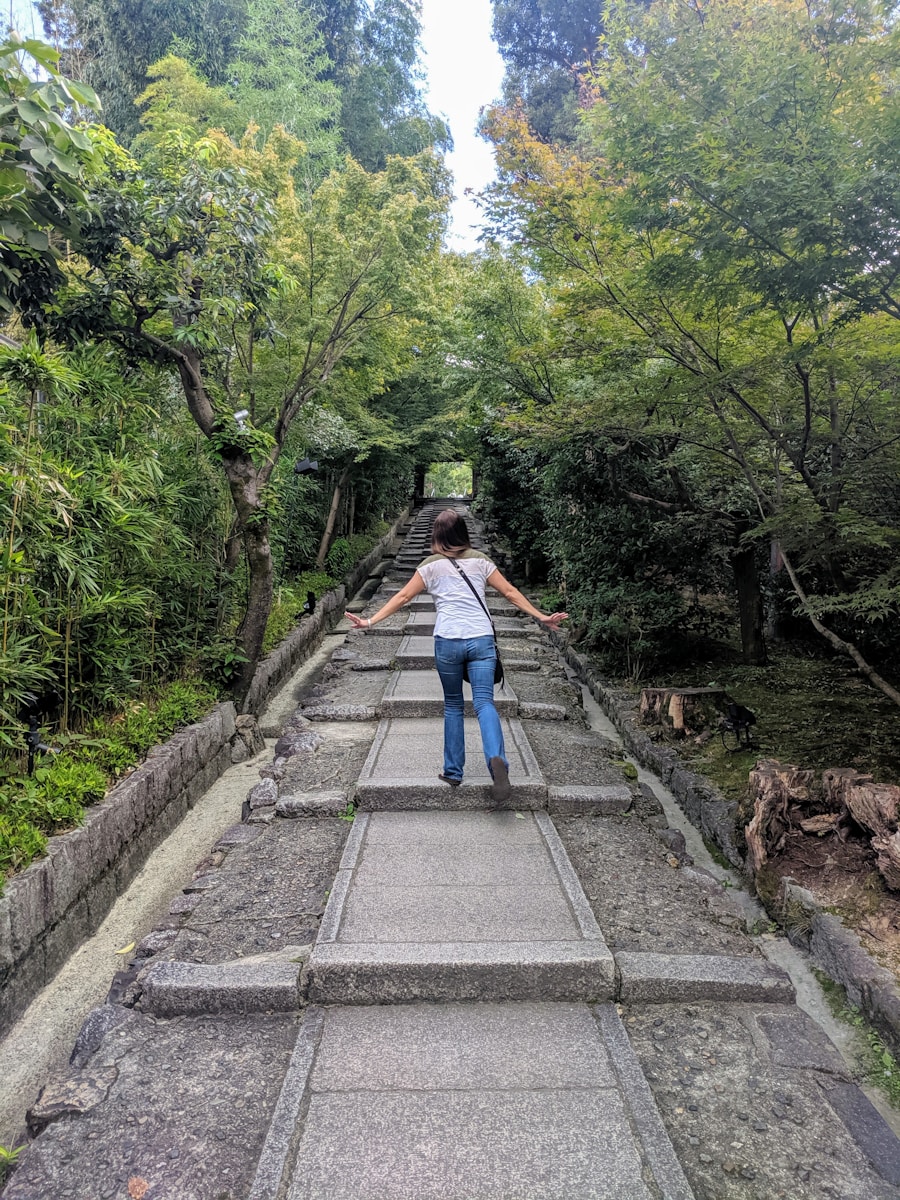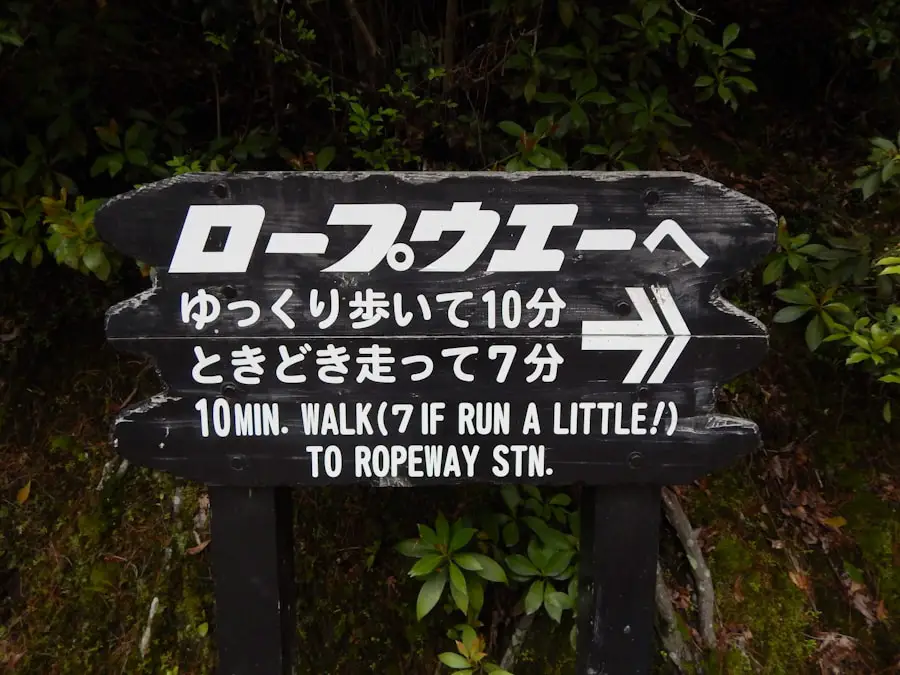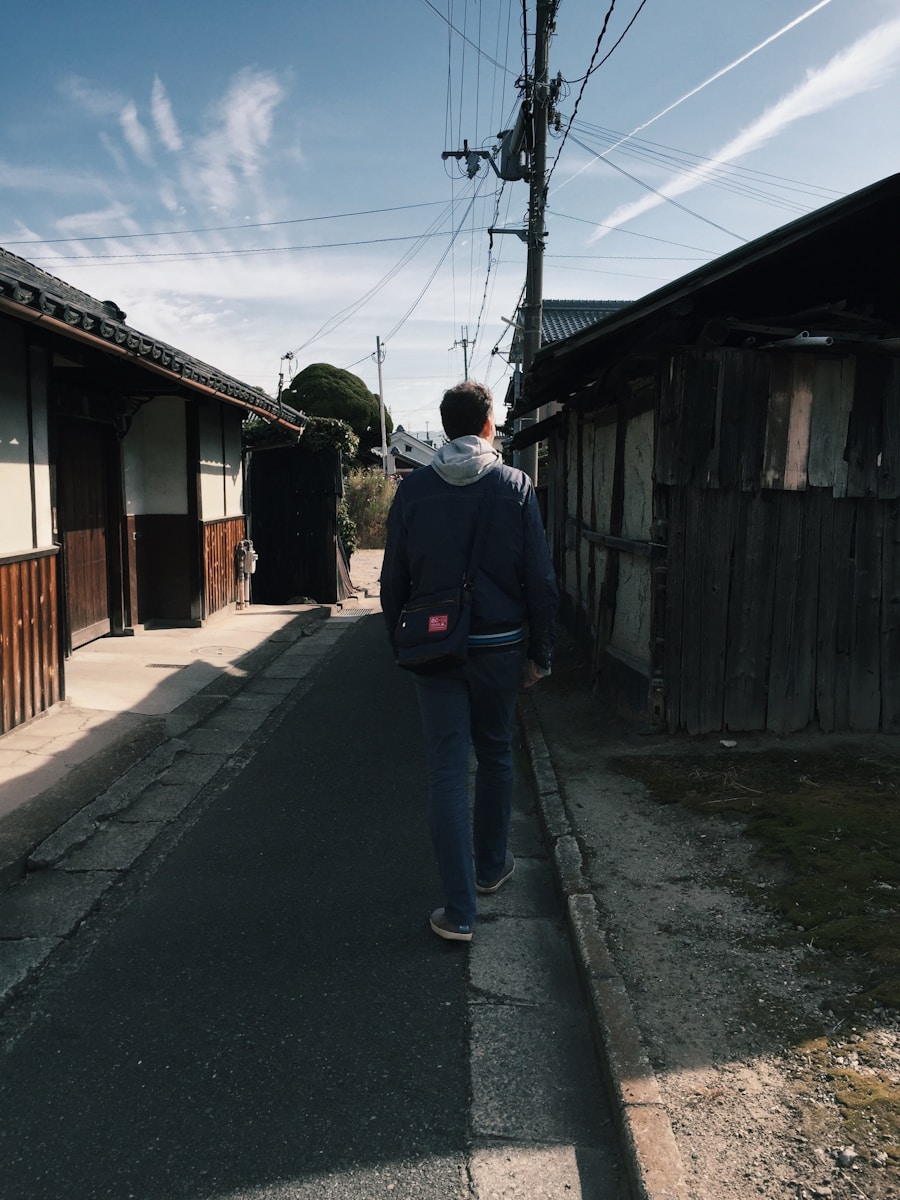Japan’s climate is as diverse as its geography, ranging from the snowy peaks of Hokkaido in the north to the subtropical islands of Okinawa in the south. The country experiences four distinct seasons: spring, summer, autumn, and winter, each bringing its own unique weather patterns and temperatures. Spring, particularly from March to May, is characterized by mild temperatures and the famous cherry blossom season, making it a popular time for outdoor activities.
Summer, on the other hand, can be hot and humid, especially in urban areas like Tokyo and Osaka, with temperatures often exceeding 30 degrees Celsius (86 degrees Fahrenheit). This season also brings the rainy season, known as “tsuyu,” which typically lasts from early June to mid-July, resulting in increased precipitation. Autumn is another favored season for hiking, as the weather cools down and the foliage transforms into vibrant hues of red, orange, and yellow.
This period, from September to November, offers comfortable temperatures and clear skies, ideal for outdoor exploration.
Winter, particularly in regions like Hokkaido and the Japanese Alps, can be harsh with heavy snowfall and freezing temperatures. However, this season also attracts winter sports enthusiasts to ski resorts.Understanding these climatic variations is crucial for hikers planning their trips, as it influences not only the choice of clothing but also the selection of trails and activities.
Key Takeaways
- Japan has a diverse climate, with hot and humid summers and cold winters, making it important to choose the right clothing for outdoor activities.
- Hiking pants are practical and versatile for outdoor activities in Japan, providing protection from the elements and allowing for ease of movement.
- When visiting Japan, it’s important to consider cultural norms and dress modestly, especially when hiking or participating in outdoor activities.
- Some popular hiking destinations in Japan include Mount Fuji, the Kumano Kodo pilgrimage routes, and the Japanese Alps.
- When choosing hiking pants for Japan, consider factors such as weather, terrain, and comfort, and opt for quick-drying and moisture-wicking materials.
Hiking Pants: Practical and Versatile
Hiking pants are an essential piece of gear for anyone venturing into Japan’s diverse landscapes. Unlike regular trousers, hiking pants are designed with functionality in mind. They are typically made from lightweight, breathable materials that wick moisture away from the skin, keeping hikers comfortable during strenuous activities.
Many hiking pants also feature quick-drying properties, which are particularly beneficial during Japan’s rainy season when unexpected downpours can occur. The versatility of hiking pants extends beyond their fabric; they often come with features such as multiple pockets for storing essentials like maps, snacks, and small tools. Moreover, many hiking pants are designed with flexibility in mind.
Some models come with zip-off legs that can be converted into shorts, allowing hikers to adapt to changing temperatures throughout the day. This adaptability is particularly useful in Japan, where weather conditions can shift rapidly. Additionally, many hiking pants include reinforced knees and seat areas to withstand wear and tear from rugged terrains.
The combination of practicality and comfort makes hiking pants an indispensable choice for exploring Japan’s trails.
Cultural Considerations for Clothing in Japan

When traveling to Japan, it is essential to be mindful of cultural norms regarding clothing. The Japanese place a high value on modesty and appropriateness in dress, which extends to outdoor activities as well. While hiking may seem like a casual endeavor, wearing overly revealing or inappropriate clothing can attract unwanted attention or be considered disrespectful.
It is advisable to choose clothing that is functional yet respectful of local customs. For instance, opting for long-sleeved shirts and pants not only provides protection from the sun and insects but also aligns with cultural expectations. In addition to modesty, the Japanese appreciate cleanliness and tidiness in appearance.
This cultural trait is reflected in their approach to outdoor activities as well. Hikers are encouraged to wear clean and well-maintained clothing while on the trails. This not only shows respect for fellow hikers but also reflects a broader cultural ethos of harmony with nature.
Therefore, selecting hiking pants that are not only practical but also presentable can enhance the overall experience while respecting local customs.
Popular Hiking Destinations in Japan
| Destination | Trail Length (km) | Elevation Gain (m) | Difficulty |
|---|---|---|---|
| Mount Fuji | 3.6 | 1,388 | Difficult |
| Kumano Kodo | 90 | 3,000 | Moderate |
| Nakasendo Trail | 8 | 200 | Easy |
| Shirakami Sanchi | 16 | 800 | Moderate |
Japan boasts a plethora of stunning hiking destinations that cater to all levels of experience.
One of the most iconic is Mount Fuji, the country’s highest peak and a UNESCO World Heritage site. The Yoshida Trail is a popular route for climbers during the official climbing season from July to September.The trail offers breathtaking views and a chance to witness the sunrise from the summit—a truly unforgettable experience. Another notable destination is the Kumano Kodo pilgrimage routes on the Kii Peninsula, which feature ancient trails that connect sacred sites and offer a glimpse into Japan’s spiritual heritage. For those seeking a more remote experience, the Northern Japan Alps provide challenging hikes amidst dramatic mountain scenery.
The Kamikochi area serves as a gateway to these mountains and offers various trails suitable for both novice and experienced hikers. The lush landscapes are dotted with alpine flowers during summer months and provide stunning vistas year-round. Additionally, Shiretoko National Park in Hokkaido is renowned for its rugged beauty and diverse wildlife, making it an excellent choice for nature enthusiasts looking to explore Japan’s natural wonders.
Tips for Choosing the Right Hiking Pants for Japan
Selecting the right hiking pants for your trip to Japan involves considering several factors that align with both the climate and your personal preferences. First and foremost, prioritize comfort; look for pants with an adjustable waistband or those made from stretchy materials that allow for ease of movement during hikes. Breathability is another critical aspect; fabrics such as nylon or polyester blends are often preferred due to their moisture-wicking properties.
Additionally, consider the weather conditions you may encounter during your hike. If you plan to hike during the rainy season or in areas prone to sudden showers, investing in water-resistant or waterproof hiking pants can be beneficial. Features such as zippered pockets can also enhance functionality by providing secure storage for essentials while keeping them easily accessible.
Lastly, think about layering; choosing lightweight pants that can be worn over thermal leggings in colder months will ensure you remain comfortable regardless of temperature fluctuations.
Benefits of Wearing Hiking Pants in Japan

Protection from Environmental Elements
Hiking pants shield your legs from sun exposure, insect bites, and scratches from vegetation along the trails. This protective layer is particularly important in areas where dense foliage or rocky terrains are prevalent.
Convenience Features
Many hiking pants come equipped with features designed for convenience. They often include built-in UV protection to safeguard against harmful rays during long hikes under the sun. The presence of multiple pockets allows hikers to carry essential items without needing a bulky backpack for short excursions.
Quick-Drying Capabilities
Additionally, their quick-drying capabilities mean that even if you encounter rain or sweat during your hike, you won’t be left feeling damp or uncomfortable for long periods.
Alternatives to Hiking Pants for Outdoor Activities in Japan
While hiking pants are a popular choice among outdoor enthusiasts in Japan, there are several alternatives that may suit different preferences or activities better. For instance, lightweight cargo shorts can be an excellent option during the hot summer months when breathability is paramount. These shorts often feature multiple pockets similar to hiking pants and allow for greater airflow while still providing some protection against minor scrapes.
Another alternative is using athletic leggings or tights designed specifically for outdoor activities. These garments offer flexibility and comfort while providing moisture-wicking properties that keep you dry during strenuous hikes. They can be paired with longer tops or tunics to maintain modesty while still allowing freedom of movement.
Additionally, some brands offer convertible pants that can be transformed into shorts by zipping off the legs—an ideal solution for those who want versatility without carrying multiple pieces of clothing.
Packing and Preparing for a Hiking Trip in Japan
Preparing for a hiking trip in Japan requires careful planning and packing to ensure a smooth experience on the trails. Start by researching your chosen destination thoroughly; understanding trail conditions, weather forecasts, and any necessary permits will help you prepare adequately. It’s also wise to familiarize yourself with local customs regarding outdoor activities—this includes understanding trail etiquette and respecting nature by following Leave No Trace principles.
When packing your gear, prioritize lightweight and multifunctional items that can serve multiple purposes during your trip. In addition to your hiking pants or alternatives, consider packing moisture-wicking base layers, a breathable long-sleeve shirt for sun protection, and a lightweight waterproof jacket for unexpected rain showers. Footwear is equally important; invest in sturdy hiking boots or shoes that provide good traction and support for uneven terrain.
Don’t forget essential accessories such as a hat for sun protection, sunglasses with UV protection, and a reliable backpack to carry your supplies comfortably. Hydration is crucial while hiking; therefore, pack a reusable water bottle or hydration system to stay refreshed throughout your journey. Finally, always carry a basic first-aid kit along with navigation tools like maps or GPS devices to ensure safety while exploring Japan’s breathtaking landscapes.
If you are planning a hiking trip in Japan, you may be wondering if you can wear hiking pants in the country. According to a related article on TakeTravelInfo, having the right gear, including hiking pants, is essential for a successful hiking experience. The article discusses the importance of choosing the best sleeping bag for backpacking travel, which can also be crucial for your comfort and safety during your hiking adventure in Japan.
Love travel? Join Our Facebook Community
FAQs
What are hiking pants?
Hiking pants are specialized pants designed for outdoor activities such as hiking, trekking, and climbing. They are typically made of lightweight, quick-drying, and durable materials with features like reinforced knees, multiple pockets, and adjustable waistbands.
Can you wear hiking pants in Japan?
Yes, you can wear hiking pants in Japan, especially if you plan to engage in outdoor activities such as hiking, walking, or exploring nature. Hiking pants are practical and comfortable for various activities and can be worn in both urban and rural settings.
Are there any restrictions on wearing hiking pants in Japan?
There are no specific restrictions on wearing hiking pants in Japan. However, it’s important to be mindful of local customs and dress codes, especially when visiting religious sites, traditional events, or formal settings. In such cases, it may be more appropriate to wear more formal attire.
What are the benefits of wearing hiking pants in Japan?
Wearing hiking pants in Japan can provide several benefits, including comfort, durability, and practicality for outdoor activities. Hiking pants are designed to be breathable, quick-drying, and offer protection from the elements, making them suitable for various weather conditions.
Can hiking pants be worn in urban areas of Japan?
Yes, hiking pants can be worn in urban areas of Japan, especially if you plan to do a lot of walking or exploring. They are practical and versatile, offering comfort and functionality for urban adventures. However, it’s important to be mindful of local customs and dress codes in more formal or traditional settings.
